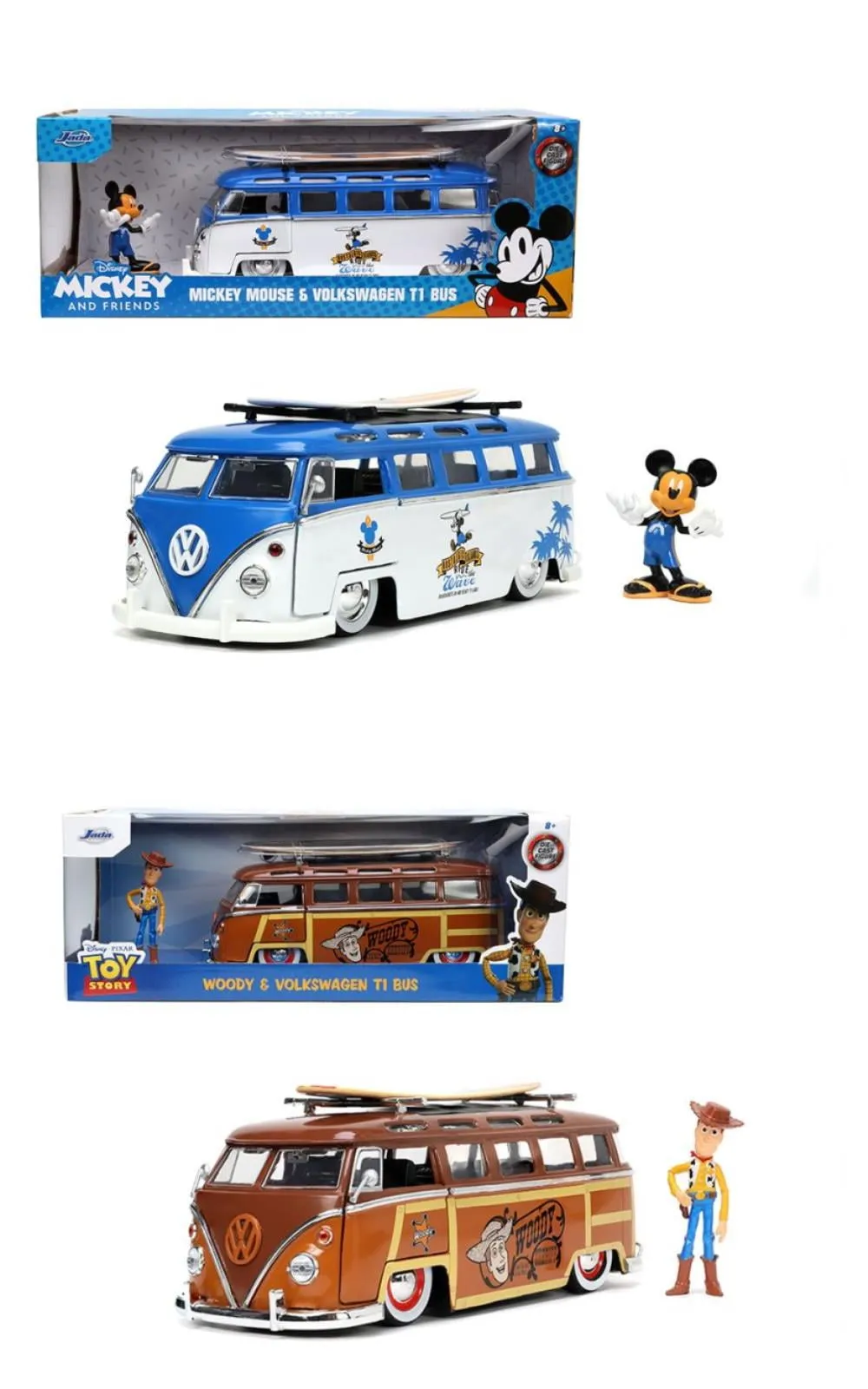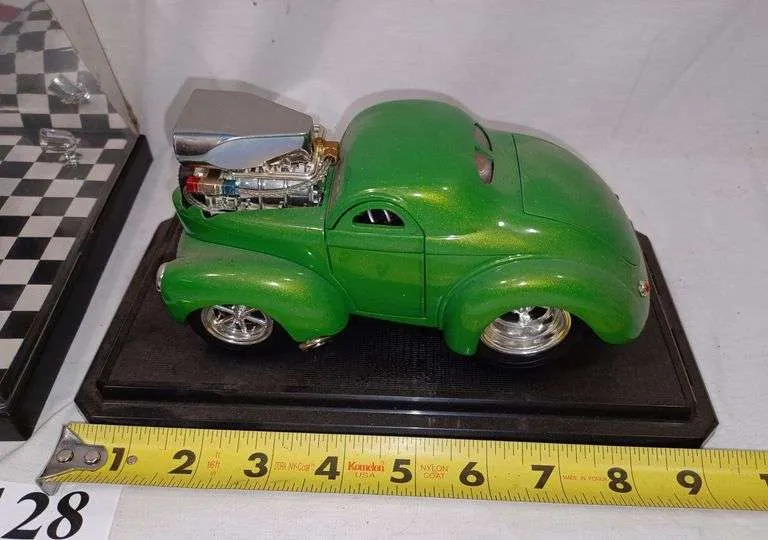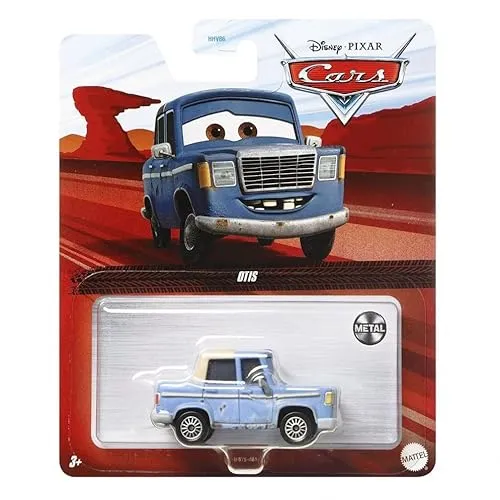What Are Diecast Cars
Diecast cars are miniature replicas of real vehicles, manufactured using a die-casting process. This process involves injecting molten metal, typically zinc alloys, into molds to create highly detailed and accurate models. These cars are not just toys they are collectibles, prized for their craftsmanship, historical significance, and investment potential. Diecast cars come in a wide range of scales, from tiny models to larger, more detailed representations, catering to diverse collectors and enthusiasts. The level of detail can vary significantly, from simple designs to intricate recreations that include interior features, opening doors, and realistic paint finishes. The popularity of diecast cars spans generations and cultures, making them a cherished hobby and a valuable part of the collecting world.
The History of Diecast Cars
The history of diecast cars dates back to the early 20th century, with the earliest examples appearing in the pre-World War II era. The first diecast models were relatively simple, primarily made of lead and tin. However, the post-war period saw significant advancements in die-casting technology and the use of more durable materials, such as zinc alloys. This led to increased detail and realism in the models. The 1950s and 1960s are considered the golden age of diecast cars, with iconic brands like Dinky Toys and Corgi emerging and producing a wide variety of models. These early diecast cars often replicated popular cars of the time and included features like working suspension and opening doors. The evolution of diecast cars continues, with modern manufacturers constantly striving to improve detail, quality, and accuracy. Today, diecast cars represent a rich history and serve as a testament to the evolution of automotive design and manufacturing.
Key Features of Diecast Cars

Diecast cars are defined by several key features that make them unique and collectible. The die-casting process itself is fundamental, allowing for the creation of intricate designs and fine details that are difficult to achieve with other manufacturing methods. The materials used, primarily zinc alloys, provide durability and a realistic weight to the models. Scale is another crucial aspect, with models produced in various sizes, such as 1:18, 1:24, and 1:43, to represent different levels of detail and display options. The attention to detail is a hallmark of high-quality diecast cars, encompassing everything from the paint finish and interior features to the working parts, such as opening doors, hoods, and wheels. Manufacturers also focus on accuracy, ensuring that the models are faithful representations of the original vehicles. These features combine to create highly desirable collectibles that appeal to a wide range of enthusiasts. The best diecast cars are not only visually stunning but also historically accurate and durable.
Scale and Size
Scale is one of the most important considerations for diecast car collectors, determining the size and level of detail of the models. Common scales include 1:18, 1:24, 1:43, and 1:64, each offering a different balance of size and detail. Larger scales, such as 1:18, provide more room for intricate features and allow collectors to appreciate the finer details. These models are often favored for their impressive presence and are ideal for display. 1:24 scale models strike a balance between size and affordability, offering a good level of detail without taking up too much space. These models are a popular choice for many collectors. Smaller scales, such as 1:43 and 1:64, are more compact and easier to display in larger numbers, allowing for extensive collections without requiring significant space. Each scale offers its own unique advantages, so collectors often choose scales based on their preferences, available space, and budget. Selecting the right scale is crucial for building a collection that meets your individual needs and aesthetic preferences.
Materials and Construction
The materials and construction of diecast cars are central to their quality, durability, and collectibility. The primary material used is typically a zinc alloy, a mixture of zinc, aluminum, magnesium, and copper. This alloy is chosen for its ability to be die-cast into intricate shapes, its durability, and its weight, which gives the models a realistic feel. The die-casting process itself involves injecting molten metal into molds under high pressure, allowing for precise replication of the car’s design. The construction of diecast cars often includes additional materials, such as plastic for interior components, tires, and other details. Glass or clear plastic is used for windows. The quality of the materials and the precision of the construction directly impact the model’s overall appearance, functionality, and longevity. High-quality diecast cars feature detailed interiors, accurate paint finishes, and working parts, such as opening doors and steering wheels, which enhance their collectibility and value.
Diecast Cars Buying Guide Top 5 Tips

Tip 1 Research and Know Your Budget
Before starting your diecast car collection, it’s important to do your research and set a budget. Understanding the market, the different brands, and the various scales available will help you make informed decisions. Explore different online resources, collector forums, and price guides to get an idea of the values of different models and brands. Determine how much you are willing to spend on individual models and your overall collection. Setting a budget will help you avoid overspending and prevent you from impulsive purchases. It is wise to start with a manageable budget and gradually increase it as your collection grows. Researching the market will also make sure that you will be avoiding counterfeit products.
Tip 2 Identify Your Collecting Interests
To create a focused and satisfying collection, identify your specific collecting interests. This could involve focusing on a particular brand, such as Hot Wheels or Autoart, or a specific type of vehicle, like classic cars, race cars, or modern sports cars. Perhaps you are interested in collecting models from a specific era. Defining your interests will help you narrow your search and make it easier to find models that align with your passion. Knowing your collecting niche can help you make the most of your budget and grow a collection that resonates with you. This will provide direction and purpose. This focus allows you to create a themed collection with a clear purpose.
Tip 3 Assess the Quality and Details

When buying diecast cars, carefully assess the quality and level of detail. Look for models with accurate paint finishes, detailed interiors, and realistic features, such as opening doors, hoods, and trunks. Examine the overall construction, paying attention to the materials used and how well the model is assembled. Check for any imperfections, such as paint flaws, misaligned parts, or loose components. The level of detail and the quality of construction are key indicators of the model’s value and collectibility. High-quality models often have better details. Examine the details, such as the engine, dashboard, and wheels. These details not only enhance the model’s aesthetic appeal but also contribute to its value. A thorough inspection will help you make informed decisions and add valuable models to your collection.
Tip 4 Understand the Market and Value
Understanding the market and the value of diecast cars is crucial for making sound purchasing decisions. Research the prices of the models you are interested in, using online price guides, auction sites, and collector forums. Familiarize yourself with the factors that influence the value of diecast cars, such as rarity, condition, brand, and historical significance. Limited-edition models or models from specific eras often command higher prices. The condition of the model is another key factor affecting its value. Models in mint condition with their original packaging are generally more valuable. Knowledge of the market can help you spot deals, avoid overpaying, and ensure that you are investing in models that are likely to appreciate in value over time. Evaluate the past sales to know if a model is undervalued.
Tip 5 Buy From Reputable Sources
To ensure the authenticity and quality of your diecast cars, it is essential to buy from reputable sources. This includes established online retailers, specialty diecast shops, and authorized dealers. When buying online, check the seller’s feedback and reviews to gauge their trustworthiness and customer service. Be cautious when purchasing from unverified sources or private sellers, as there is a higher risk of encountering counterfeit or damaged models. Always ask for detailed photos and descriptions of the model’s condition before making a purchase. If buying at an event, check the seller’s credentials. By sticking to reputable sources, you can minimize the risk of buying a fake diecast car.
Care and Maintenance of Diecast Cars

Proper care and maintenance are essential for preserving the condition and value of your diecast car collection. Store your models in a dust-free, climate-controlled environment, away from direct sunlight and extreme temperatures. Direct sunlight can cause the paint to fade, while extreme temperatures can warp the models. Use a soft cloth or a specialized model cleaner to dust and clean your cars regularly. Avoid using harsh chemicals or abrasive materials, as they can damage the paint and details. Handling your models with clean hands and avoiding excessive touching can also help prevent damage. By implementing these care practices, you can ensure that your diecast cars remain in excellent condition for years to come, preserving their value and enjoyment.
Displaying and Storing Your Collection
Proper display and storage are critical aspects of diecast car collecting, influencing both the aesthetic appeal and the preservation of your models. Consider using display cases, shelves, or shadow boxes to showcase your collection and protect them from dust and damage. Arrange your cars in an organized manner, grouping them by brand, scale, or type to create a visually appealing display. When storing your collection, choose a location that is dry, temperature-controlled, and away from direct sunlight. Avoid storing models in attics or basements, where they may be exposed to extreme temperatures or humidity. Use individual display cases or protective packaging to further safeguard your cars. Make sure to provide space for expansion. With appropriate display and storage strategies, your diecast car collection will look great and be protected for years to come.
Value and Investment Potential
Diecast cars can represent a significant investment, with the potential to appreciate in value over time. Certain factors influence the value of diecast cars, including rarity, condition, brand, and historical significance. Limited-edition models and those from sought-after brands are often the most valuable. The condition of the model is crucial, with models in mint condition with their original packaging commanding premium prices. Certain brands are more valuable than others. Thorough research and market analysis are essential for making informed investment decisions. While diecast cars can be a rewarding investment, it is important to approach it with realistic expectations and a long-term perspective. By understanding the market and focusing on high-quality, rare, or historically significant models, collectors can maximize their investment potential.
How to Spot a Fake Diecast Car

Identifying fake diecast cars is essential for protecting your collection and ensuring that you are investing in authentic models. Inspect the model closely for any signs of poor craftsmanship, such as paint defects, misaligned parts, or incorrect detailing. Compare the model to images of the authentic version online. Pay close attention to the details, such as the logos, markings, and features, to identify any discrepancies. Counterfeit models often use inferior materials, resulting in a lower-quality appearance and feel. Examine the packaging for any inconsistencies or errors. Check the seller’s reputation and purchase from reputable sources to minimize the risk of buying a fake. By being vigilant and conducting thorough research, you can safeguard your collection and avoid purchasing counterfeit models.
Common Mistakes to Avoid When Buying Diecast Cars
Avoiding common mistakes can help you have a more enjoyable and successful diecast car collecting experience. One common mistake is overspending or exceeding your budget. It’s crucial to set a budget and stick to it to avoid financial strain. Another mistake is making impulsive purchases without conducting thorough research. Always take the time to research the market and the value of the models you are interested in before making a purchase. Neglecting the condition of the model is another mistake, as the condition greatly affects its value. Do not buy models from untrustworthy sources. Ensure that you buy from authorized dealers. By avoiding these common mistakes, you can make more informed decisions and grow a rewarding collection.
